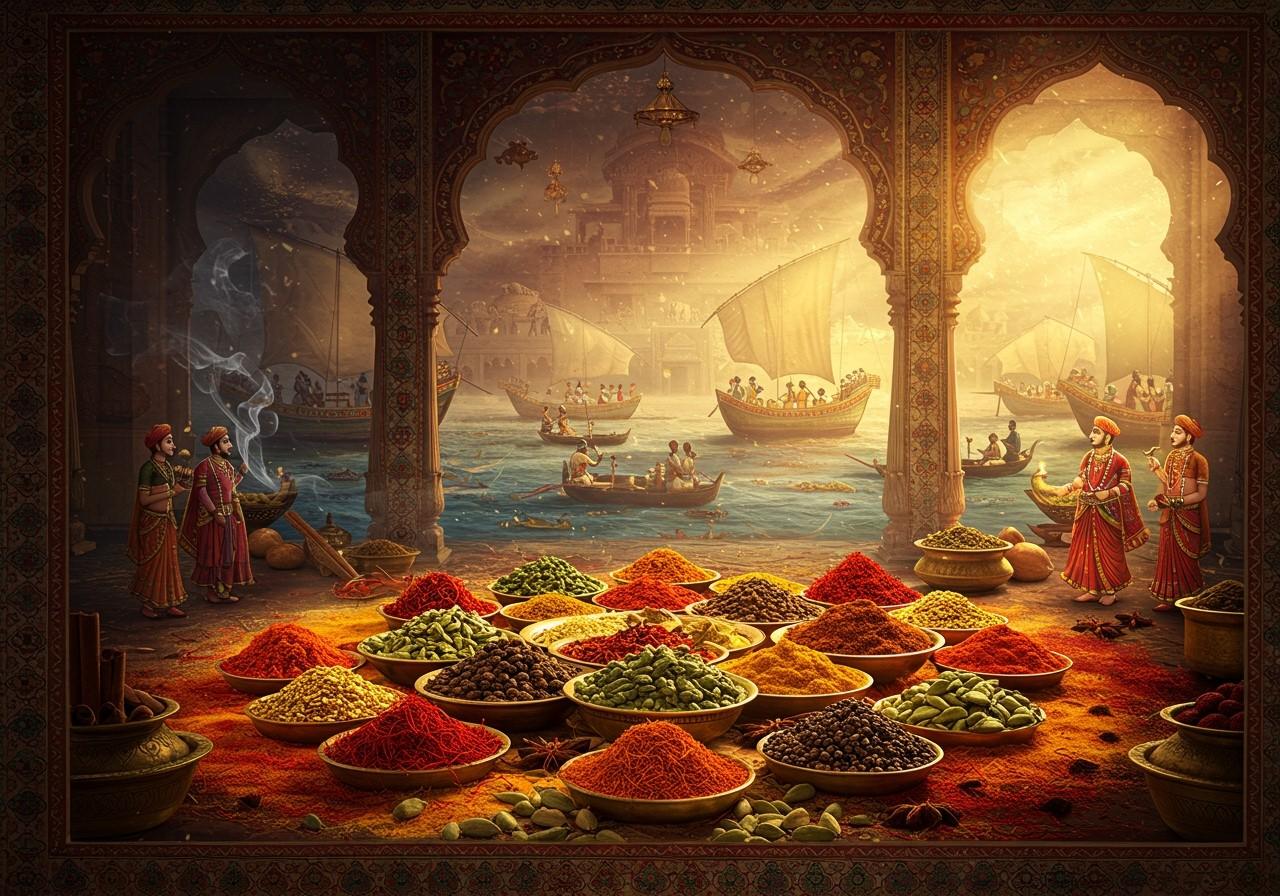
The spice trade has profoundly shaped global gastronomy for over two millennia. Introducing novel ingredients and flavors, establishing trade routes, and fostering cultural exchange, spices have left an indelible mark on culinary traditions worldwide. This exploration delves into the history of the spice trade, its influence on various cuisines, and its enduring relevance in modern culinary practices.
Origins and Expansion of the Spice Trade
The spice trade’s roots lie in ancient civilizations. Egyptians, Indians, and Chinese recognized the medicinal, preservative, and flavor-enhancing properties of spices. Arab traders played a pivotal role in disseminating spices across the Middle East and into Europe. The Silk Road emerged as a vital artery for exchanging spices and other commodities, bridging East and West and facilitating the sharing of culinary knowledge and practices.
-
Ancient Civilizations and Spices: Egyptians, Indians, and Chinese utilized spices for their medicinal properties, preservation qualities, and flavoring capabilities.
-
Arab Traders and Spice Routes: Arab traders were instrumental in spreading spices throughout the Middle East and into Europe, establishing key trade routes and facilitating cultural exchange.
-
The Silk Road: This network of trade routes played a vital role in connecting East and West, enabling the exchange of spices, other goods, and culinary traditions.
European Exploration and the Spice Quest
European exploration significantly impacted the spice trade. Explorers like Vasco da Gama and Christopher Columbus sought direct access to spice sources, leading to the discovery of new sea routes to India and the Americas. This era of exploration transformed global trade dynamics. Powerful trading companies, such as the Dutch East India Company, gained control over the spice trade, ensuring a wider distribution of spices throughout Europe.
-
New Sea Routes: Explorers like Vasco da Gama and Christopher Columbus discovered new sea routes to India and the Americas, transforming global trade and access to spices.
-
Trading Companies: The rise of powerful trading companies, like the Dutch East India Company, led to monopolies over the spice trade and influenced the distribution of spices throughout Europe.
Spices in Indian Cuisine
Spices are fundamental to Indian culinary traditions. Indian cooking employs a vast array of spices, including turmeric, cumin, coriander, cardamom, and many others. These spices create the complex flavor profiles characteristic of Indian dishes like curries, biryanis, and masalas. Regional variations in spice usage reflect the influence of historical trade routes and local culinary practices.
-
Spice Blends and Flavor Profiles: Indian cuisine utilizes a diverse range of spices to create complex flavor profiles in dishes like curries, biryanis, and masalas.
-
Regional Variations: Different regions in India have unique spice combinations and cooking practices, reflecting the influence of historical trade routes and local culinary traditions.
Modern Influences of the Spice Trade
The legacy of the spice trade extends to modern mixology and brewing. Bartenders incorporate spices like star anise, cinnamon, and cloves into cocktails, crafting innovative drinks like the Spiced Old Fashioned and Cardamom Mojito. Craft brewers experiment with ginger, nutmeg, pepper, and other spices to create distinctive beers, drawing inspiration from historical spice routes and flavor combinations.
-
Mixology and Cocktails: Spices like star anise, cinnamon, and cloves are used in modern mixology to create innovative cocktails like the Spiced Old Fashioned and Cardamom Mojito.
-
Craft Beer and Spice Infusions: Craft brewers experiment with spices like ginger, nutmeg, and pepper to create unique flavor profiles in beers, drawing inspiration from historical spice routes.
-
Gin and Botanicals: The resurgence of gin is linked to the spice trade, with botanicals like juniper, coriander, and cardamom playing a key role in gin production, influencing modern distillation techniques and distinct gin profiles.
Poojn.in: Your Source for Authentic Indian Spices
Poojn.in offers a wide selection of authentic Indian spices, including Kabab Chini (Allspice Berries), also known as Shital Chini or Kawab Chini. This spice, integral to the historical spice trade, remains a staple in Indian cuisine. Poojn.in provides 100% pure Kabab Chini, free from artificial ingredients, in various quantities to meet your needs. For bulk orders, contact our customer service team via WhatsApp at +91 7908548235. Experience the rich heritage of Indian spices with Poojn.in.
Shop Kabab Chini at Poojn.in
Shop Turmeric at Poojn.in
Conclusion
From ancient culinary practices to modern mixology, the spice trade’s influence on global cuisine is undeniable. Spices have enriched our culinary experiences for centuries, transcending geographical boundaries and cultural differences. By understanding the historical significance of spices, we gain a deeper appreciation for the flavors that grace our tables today. Poojn.in allows you to connect with this rich heritage, offering authentic spices that bring the spirit of the spice trade to your kitchen.


